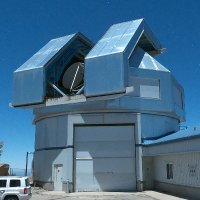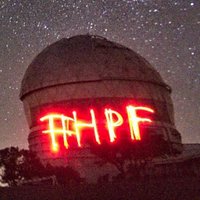
Suvrath Mahadevan
@suvrathm
ID: 2607935013
14-06-2014 04:38:40
89 Tweet
184 Followers
133 Following

To those on the job market: Come work with us at Penn State Eberly College of Science! The CEHW Postdoctoral Fellowship gives you time to pursue your own research while working with a Penn State faculty member on exoplanet and related science. psu.wd1.myworkdayjobs.com/PSU_Academic/j…





A team of astronomers led by Carnegie Earth & Planets Laboratory' @shubhamkanodia has discovered an unusual planetary system in which a large gas giant planet orbits a small red dwarf star called TOI-5205. Their findings challenge long-held ideas about planet formation. carnegiescience.edu/forbidden-plan…


Neat measurement in this new paper by PSU Department of Astronomy & Astrophysics senior Robert Frazier using NEID to determine the obliquity of the young star TOI-2076, which hosts a system of three transiting planets. Center for Exoplanets and Habitable Worlds WIYN Observatory NOIRLab Penn State Eberly College of Science

Nice graphic! Anyone can apply to use the high RV precision NEID for exoplanet science through the NOIRLab call. Enabling this capability for the community was one of our major motivations for building NEID (and of course we use it too!) WIYN Observatory US National Gemini Office


End of the EPRV 5 meeting, and a true delight to catch up with NEID and HPF friends and colleagues! What an amazing group! NEID McDonald Observatory WIYN Observatory NOIRLab PSU Department of Astronomy & Astrophysics

New discovery using HPF at the Hobby-Eberly Telescope. Giant tidal tails of Helium escaping a hot Jupiter! Neat work lead by Zhoujian (ZJ) Zhang. Enabled by both the high resolution NIR capabilities of HPF and the queue-scheduled HET! Penn State Eberly College of Science PSU Department of Astronomy & Astrophysics McDonald Observatory

An amazing result from gully and team using our HPF. A huge leading tail detected in the near-infrared Helium 10830 Angstrom line. The more we study exoplanets the more amazing they seem to get! McDonald Observatory PSU Department of Astronomy & Astrophysics Penn State Eberly College of Science

Thanks Penn State Eberly College of Science and PSU Department of Astronomy & Astrophysics for this appointment! I think its also a recognition of the fantastic graduate students, postdocs, HPF NEID teams and colleagues that I've been ever so privileged to work with!


Another neat HPF discovery lead by Guðmundur Stefánsson Paper available in Science Magazine and the Penn State press release is here psu.edu/news/research/… Penn State Eberly College of Science Center for Exoplanets and Habitable Worlds McDonald Observatory

Stefansson (Guðmundur Stefánsson) et al. have discovered an #exoplanet 13 times the mass of Earth orbiting an M dwarf star of only 0.1 solar masses. Such a high planet-to-star mass ratio is not predicted by planet formation theories. science.org/doi/10.1126/sc…


The discovery of a planet that is far too massive for its sun is calling into question what was previously understood about the formation of planets and their solar systems, according to #PennState researchers. buff.ly/3QV6sYE Suvrath Mahadevan Guðmundur Stefánsson HPF Center for Exoplanets and Habitable Worlds

NEID strikes! No fictional planets are safe. Sorry Vulcan! All part of our journey to better understand stellar activity and discover terrestrial worlds around the nearest stars. NEID WIYN Observatory Penn State Eberly College of Science PSU Department of Astronomy & Astrophysics @NASAJ

Congratulations to Arvind Gupta for leading this discovery of the most eccentric transiting planet know using NEID HPF TESS, HARP-N. A beautiful and strange system amenable to further followup. NOIRLab Penn State Eberly College of Science Center for Exoplanets and Habitable Worlds Penn State Research McDonald Observatory
